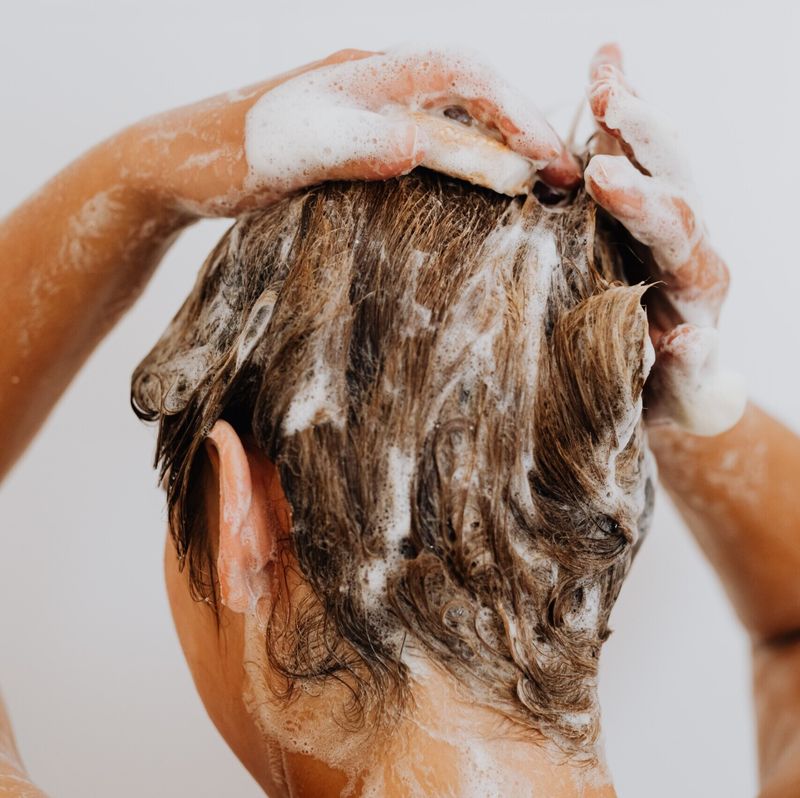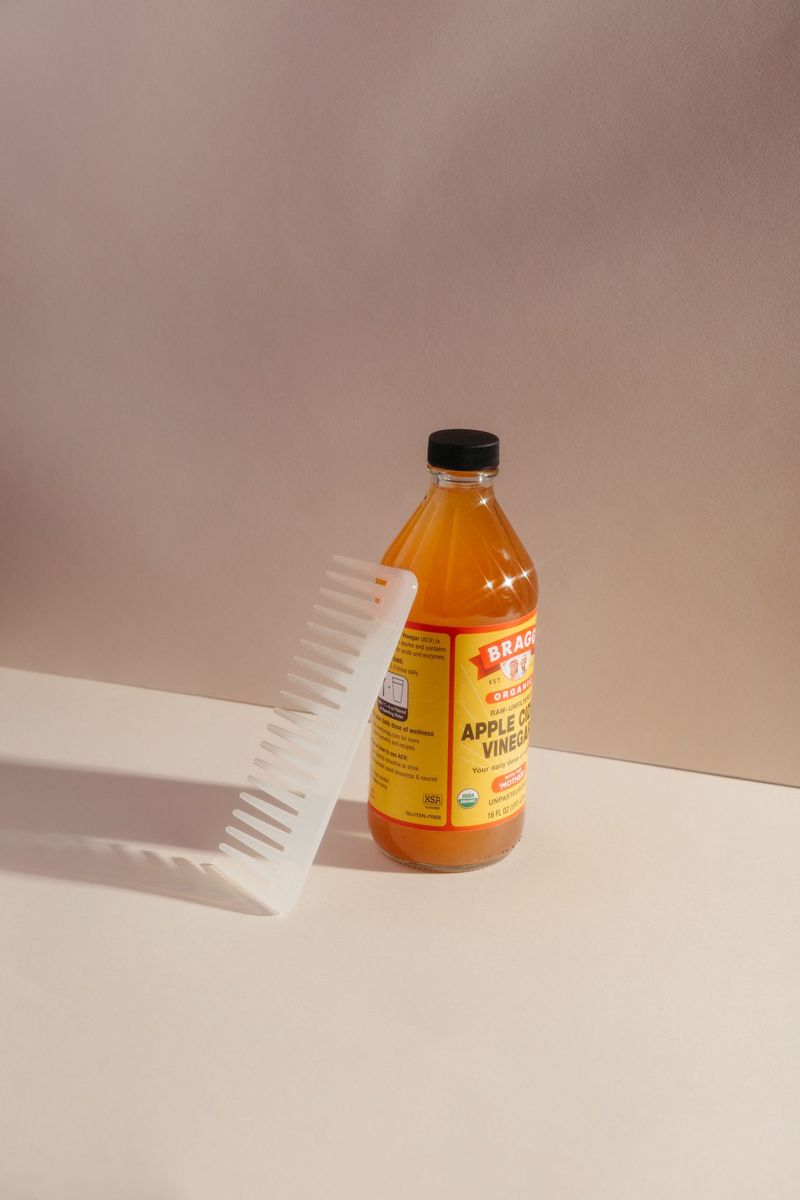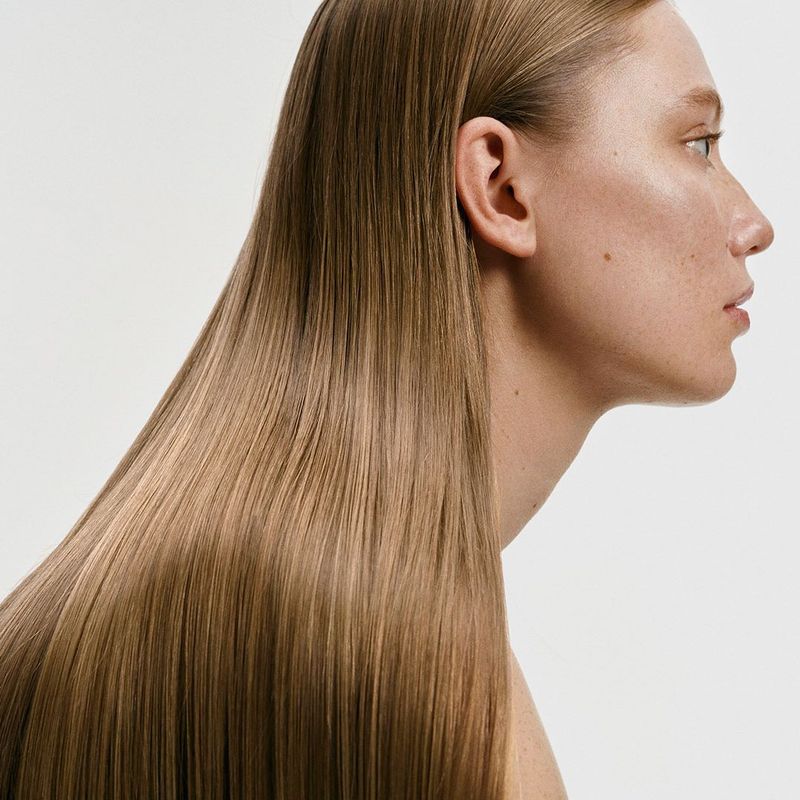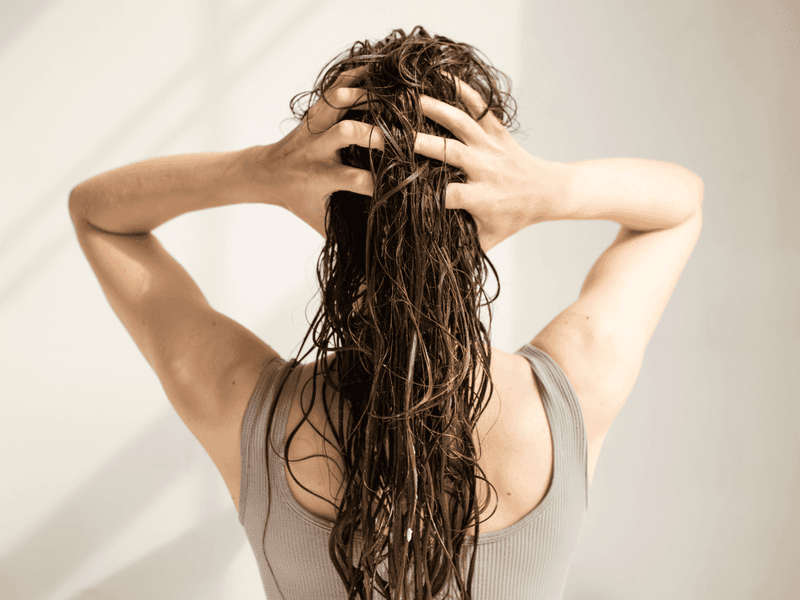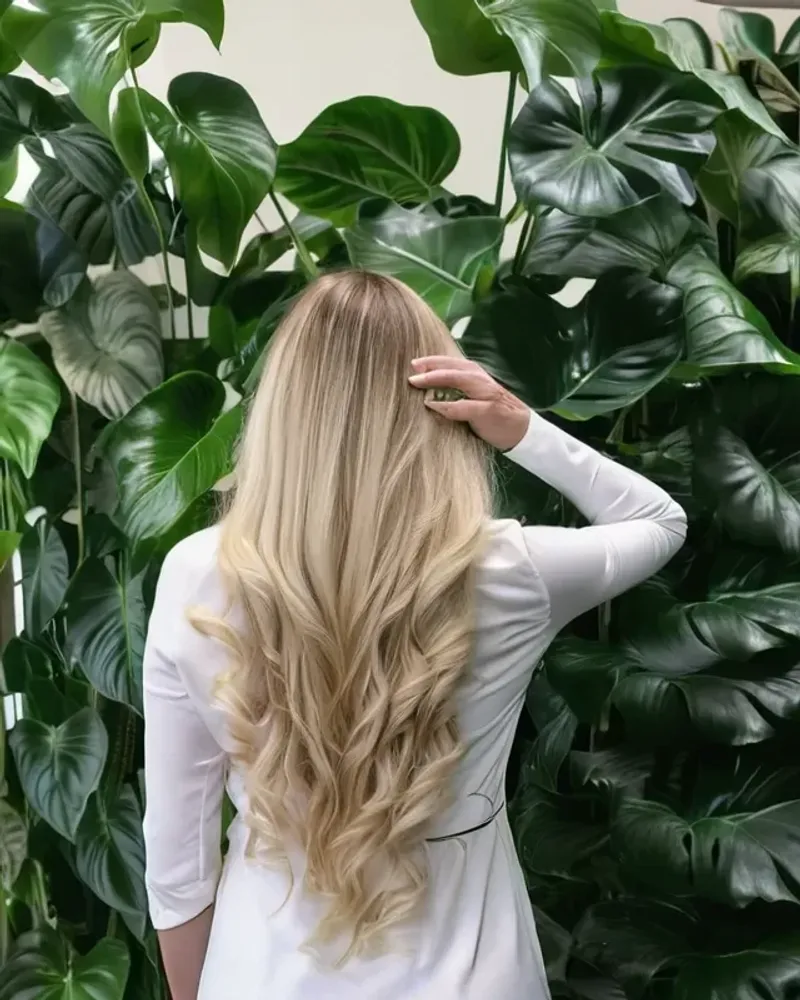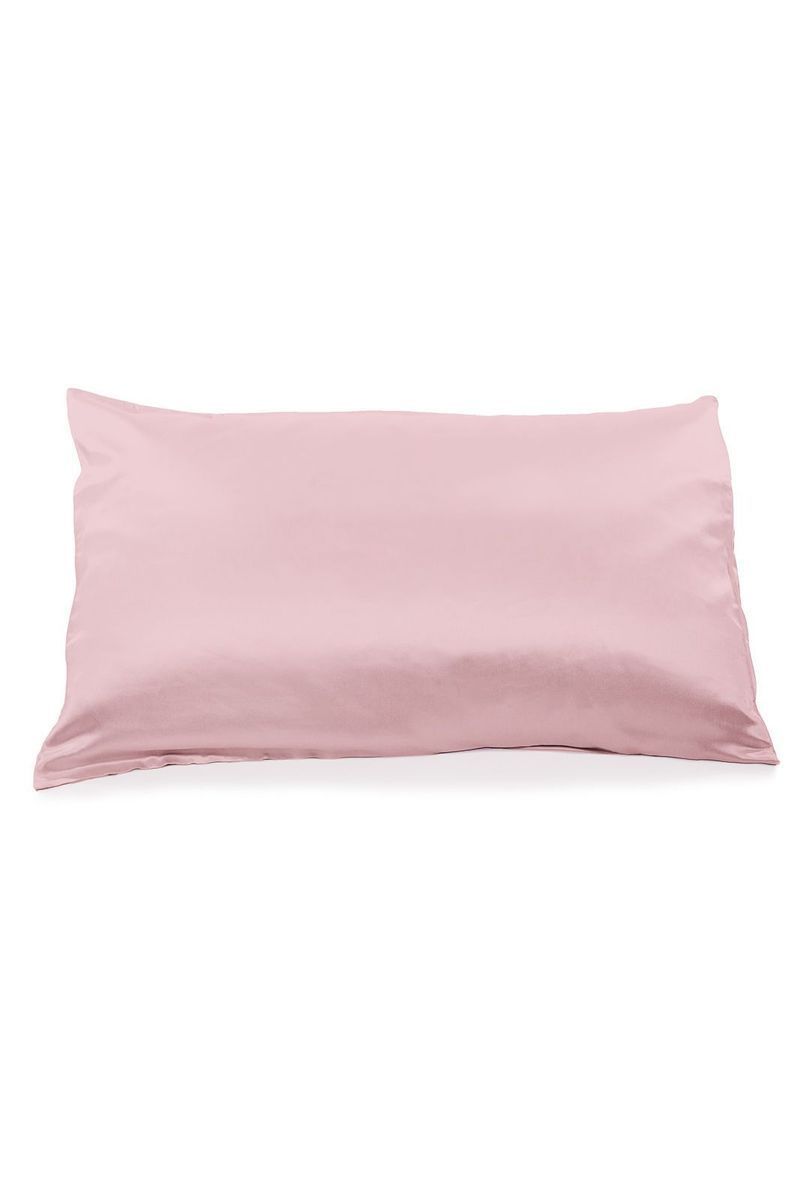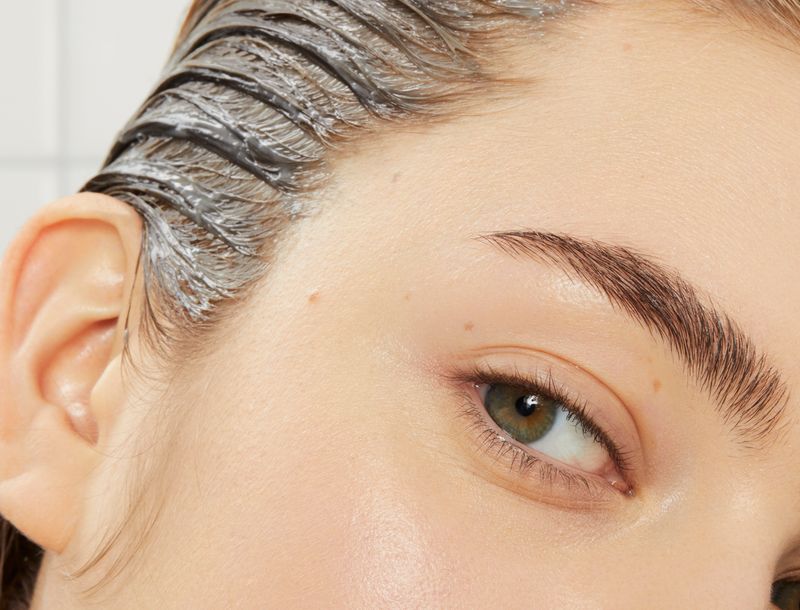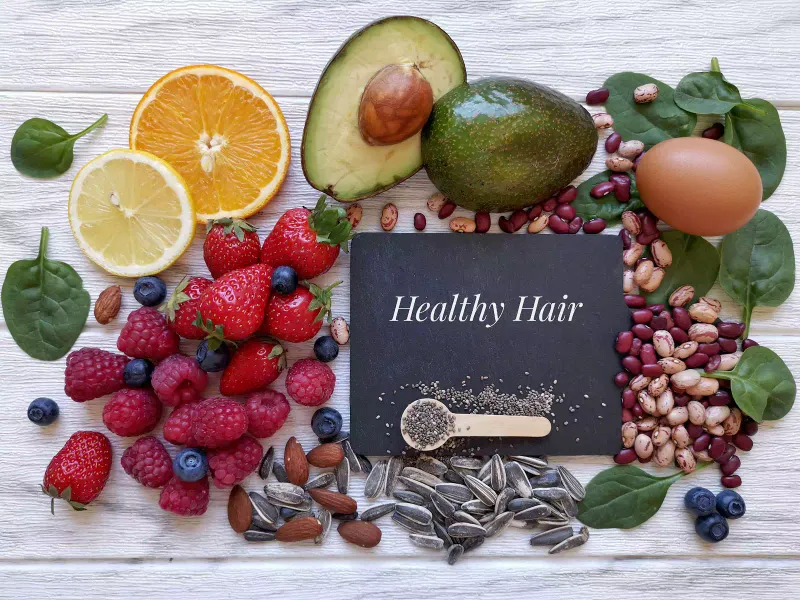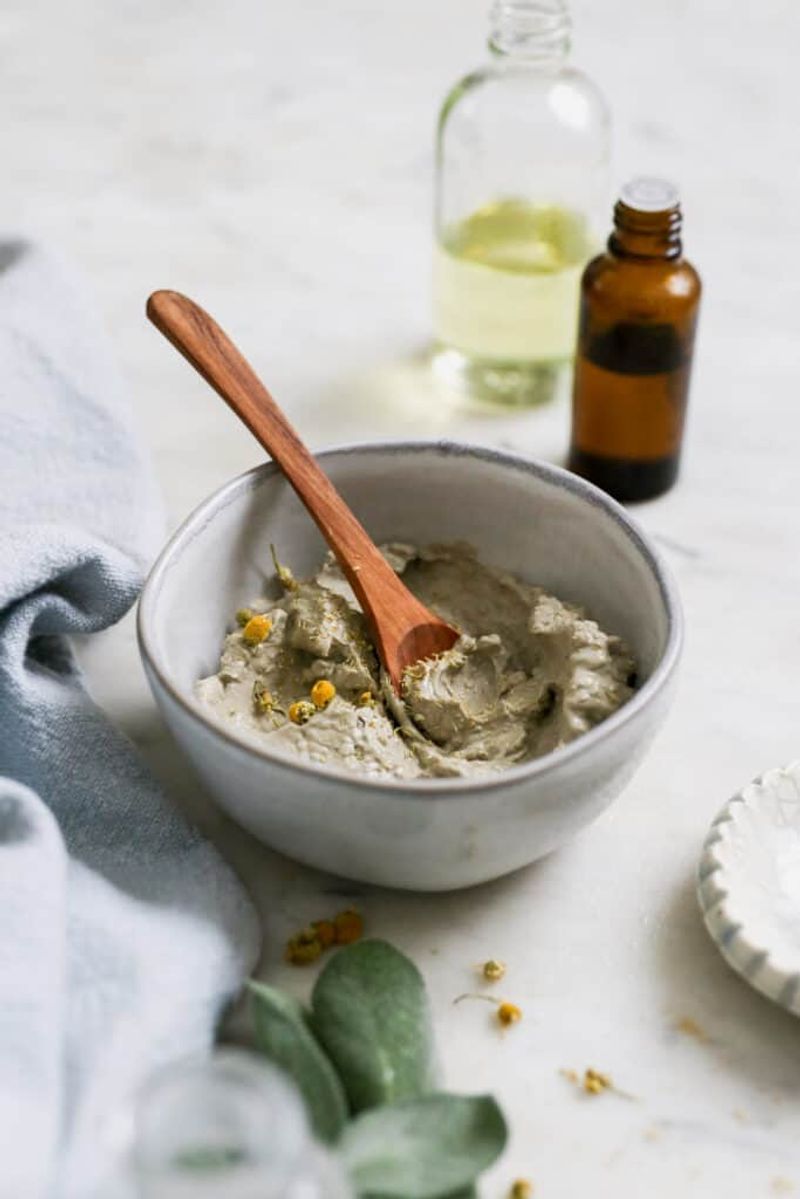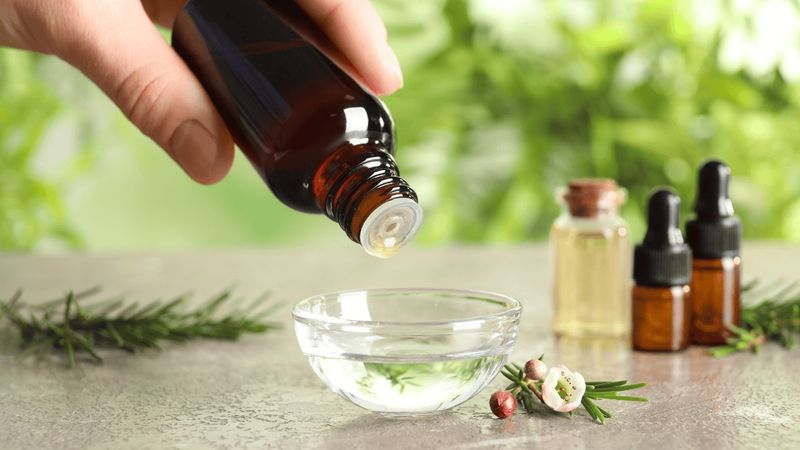Ever feel like your hair gets greasy just hours after washing it? You’re not alone. Many of us battle oily hair that seems impossible to tame, leaving us washing more often and potentially making the problem worse. The good news is that you can actually train your hair to produce less oil over time with some simple changes to your routine.
1. Wash Less Frequently
The most powerful change you can make is simply washing your hair less often. When you shampoo daily, you strip away natural oils, causing your scalp to overcompensate by producing even more oil. Start by adding just one extra day between washes.
Your hair might feel extra greasy during the transition period—that’s normal! Use dry shampoo on those in-between days to absorb excess oil. After a few weeks, your scalp will adapt and produce less oil naturally.
Related: -7 Straight-Hair Problems No One Talks About And 8 Easy Fixes That Shine
Many people find they can eventually go 3-4 days between washes once their scalp adjusts to the new schedule.
2. Escolher o champô certo
Harsh, sulfate-heavy shampoos might feel like they’re cleaning better, but they’re actually stripping your hair and triggering more oil production. Look for gentle, sulfate-free formulas specifically designed for oily hair types.
Ingredients like tea tree oil, salicylic acid, and witch hazel can help regulate sebum production without over-drying. Avoid shampoos labeled “moisturizing” or “hydrating” as these contain heavy ingredients that can weigh down already oily hair.
Clarifying shampoos are great for occasional deep cleaning, but using them too often can backfire by stimulating oil glands.
3. Try Apple Cider Vinegar Rinses
Apple cider vinegar works wonders as a natural remedy for oily hair. Mix one part ACV with three parts water and use it as a rinse after shampooing. The acidity helps balance your scalp’s pH level, which can reduce oil production over time.
The vinegar smell dissipates once your hair dries, so don’t worry about walking around smelling like a salad! This treatment also adds incredible shine and helps remove product buildup that can make oiliness worse.
For best results, use this rinse once a week. Too frequent use might irritate your scalp or dry out your ends.
4. Keep Your Hands Off
Constantly touching your hair transfers oils from your fingers to your strands. This seemingly innocent habit can make your hair look greasier much faster than normal. Pay attention to how often you run your fingers through your hair during the day—you might be surprised!
The same goes for brushing too frequently. While brushing distributes healthy oils from roots to ends, overdoing it stimulates oil glands on your scalp. Limit brushing to morning and night using a boar bristle brush.
Also avoid twirling hair around your fingers, which concentrates oils and can create visibly greasy sections.
5. Cool Water Rinse
Hot water feels amazing, but it stimulates oil production in your scalp. End every shower with a cool water rinse to close the cuticle and temporarily tighten oil-producing glands. Your hair will stay cleaner-looking longer as a result.
Bonus: cold water makes your hair shinier by smoothing the outer layer of each strand! If you can’t bear the thought of a completely cold shower, just flip your head upside down and rinse your hair separately with cool water.
This simple habit takes just 30 seconds but makes a noticeable difference in how quickly oil appears after washing.
6. Skip Conditioner on Your Roots
Applying conditioner all over, including your scalp, is a common mistake that makes oily hair worse. Conditioner is designed to add moisture—something your oil-prone roots definitely don’t need! Apply conditioner only from mid-shaft to ends, avoiding the scalp entirely.
For extra protection, tilt your head back when rinsing to prevent conditioner from flowing over your scalp. Some people with very oily hair find that skipping traditional conditioner completely and using a lightweight leave-in on just the ends works better.
Remember that even your ends need some conditioning to prevent breakage and split ends.
7. Embrace Dry Shampoo Strategically
Dry shampoo isn’t just for emergency oil control—it can be a training tool when used correctly. Apply it before bed rather than in the morning when your hair is already oily. This preventative approach absorbs oils as they’re produced overnight.
Spray about 6 inches away from roots, wait a minute for the product to absorb oils, then brush through. Choose powder formulas over aerosols for better oil absorption without the buildup that can irritate your scalp.
Just don’t rely on dry shampoo for more than two days in a row, as product buildup can clog follicles and potentially make oiliness worse long-term.
8. Switch to a Satin Pillowcase
Cotton pillowcases absorb the natural oils your hair needs while you sleep. This triggers your scalp to produce even more oil to compensate. Satin or silk pillowcases allow hair to glide across the surface without creating friction or absorbing necessary oils.
These smooth fabrics also prevent the friction that can stimulate oil glands along your hairline and back of head. As a nice bonus, satin pillowcases help prevent bedhead and hair breakage too!
If you’re not ready to invest in new pillowcases, wrapping your hair in a silk scarf before bed offers similar benefits.
9. Exfoliate Your Scalp
Just like your face, your scalp benefits from regular exfoliation to remove dead skin cells and product buildup that can trap oils. Once a week, use a scalp scrub or make your own by adding sugar to your regular shampoo.
Massage gently with fingertips—never nails—in circular motions across your entire scalp. This removes the debris that can clog hair follicles and contribute to excess oil production. It also improves blood circulation, promoting healthier hair growth.
For sensitive scalps, try a gentler approach with a silicone scalp brush during regular shampooing instead of a gritty scrub.
10. Mind Your Diet
What you eat directly affects how much oil your skin and scalp produce. Foods high in refined carbohydrates, sugars, and dairy can trigger increased oil production for many people. Increasing your intake of zinc-rich foods like pumpkin seeds, chickpeas, and lean meats may help regulate sebum.
Staying hydrated is crucial too! When you’re dehydrated, your body might compensate by producing more oil. Aim for at least eight glasses of water daily and limit alcohol, which is dehydrating.
B vitamins, particularly B2 and B6, have been linked to healthier sebum production, so consider adding more leafy greens, eggs, and fish to your diet.
11. Harness the Power of Clay Masks
Clay masks aren’t just for your face! Bentonite and kaolin clay can work wonders on an oily scalp by drawing out excess sebum without stripping essential moisture. Apply a thin layer to your scalp before shampooing, leave on for 10 minutes, then rinse thoroughly.
This treatment is perfect for those extra oily days or when you’re trying to extend time between washes. The minerals in clay also provide nutrients that support overall scalp health.
For an easy DIY version, mix bentonite clay with apple cider vinegar until it forms a smooth paste. Use this treatment once every two weeks to avoid over-drying.
12. Reconsider Your Styling Products
Heavy styling products can weigh down hair and make it look oilier faster. Switch to lightweight, oil-free formulas specifically labeled for fine or oily hair. Mousses and texturizing sprays generally work better than creams or oils for oil-prone hair.
Apply styling products at least an inch away from your scalp to prevent them from mixing with your natural oils. When using heat protectants, spray them on your hands first, then apply to mid-lengths and ends only.
Silicone-based products might temporarily make hair look smooth, but they build up over time and can trap oils against your scalp, making training harder.
13. Try Tea Tree Oil Treatments
Tea tree oil is naturally antibacterial and helps regulate sebum production. Add 5-10 drops to your regular shampoo or mix with a tablespoon of carrier oil like jojoba for a pre-shampoo treatment. The tingling sensation means it’s working to balance your scalp!
For spot treatment of extra oily areas, dilute tea tree oil with water in a small spray bottle and mist onto your roots. Never apply undiluted tea tree oil directly to your scalp as it can cause irritation.
Regular use helps normalize oil production over time and has the added benefit of preventing dandruff, which often accompanies oily scalp issues.
14. Embrace Strategic Hairstyles
Certain hairstyles can either hide oiliness or make it more noticeable. Wearing your hair down and straight showcases oil more quickly, while textured styles like braids, buns, and waves disguise it better. Plan your hairstyles strategically as you train your hair.
Fresh-washed hair can be worn down, then transition to a half-up style on day two. By day three, try braids, a slicked-back look, or a cute messy bun that actually works better with a little natural oil for hold.
Avoid tight ponytails that can stimulate oil glands along your hairline and cause breakage over time.
15. Consider Your Hair Tools
The brushes and combs you use can affect oil distribution and production. Boar bristle brushes help move natural oils from roots to ends, which is great for normal hair but might be counterproductive when you’re first training oily hair.
Start with wide-tooth combs or specialized brushes for oily hair that won’t stimulate the scalp excessively. Clean your brushes weekly with shampoo to remove oil buildup that transfers back to your hair with each use.
Metal tools heat up during blow-drying and can stimulate oil glands, so opt for ceramic, nylon, or natural wood brushes when using heat.


